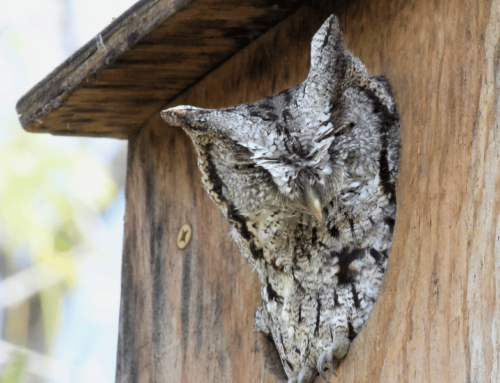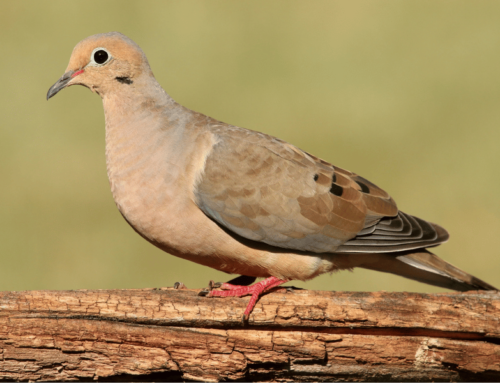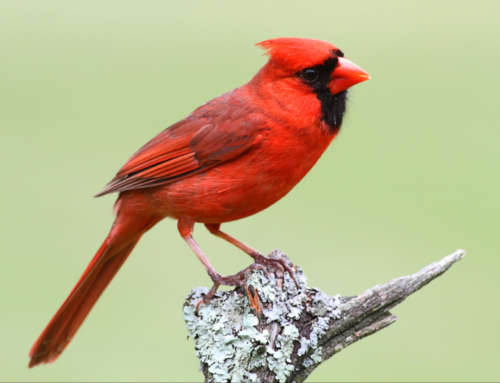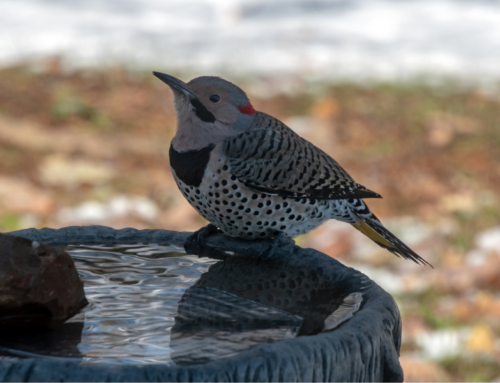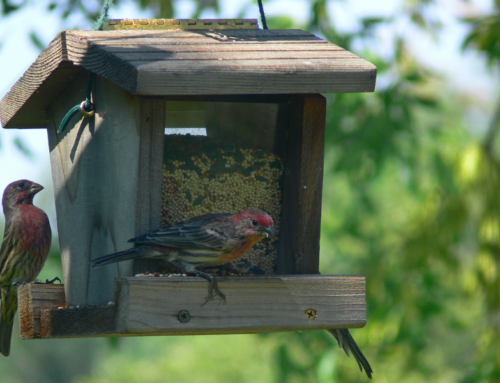Attracting birds to your backyard can involve many different types of plants. Many prefer to watch birds forage through plants rather than eat at a feeder. However, which plants are the best for attracting birds and which aren’t worth it?
This blog post is all about some of the best plants for attracting birds to your backyard.
9 Plants that work for Attracting Birds to your Yard
1. Amaranth

This is a great plant choice for your yard as they are beautiful, annual flowering plants. It only gets around a few feet tall and a couple of feet wide (91 centimeters tall and 61 centimeters wide).
This plant does best in well-drained soil. The only other soil type you need to worry about is a dense clay mixture which won’t work for them.
Plant them somewhere where they’ll get at least six hours a day. Temperature wise, they do best between 70- and 85-degrees Fahrenheit (21 to 29 degrees Celsius). Their water requirements are average. One inch of water a week will be enough.
There are currently 75 different species, giving you lots of options to chose from.
2. Grape Vines (Vitis species)

This group of vine species are a great choice for attracting birds.
They are a relatively easy plant to cultivate. For the first two years, they will need about an inch of water every week. Afterwards, they need only minimal watering and become fairly drought-tolerant. You will need a trellis or something else for the vine to grow on. These vines need yearly pruning to keep them healthy, along with the annual addition of fertilizer to their soil.
Their fruit is eaten by dozens of different types of birds.
One reason to consider getting some wild grape is how much they’ll provide for nesting birds. They provide good nesting sites for birds but also provide materials for building nests as they produce lots of plant material that birds use. These vines can also provide good cover for birds.
Obviously, the grapes from these vines can be eaten by yourself as well.
3. Boxwood

This dense shrub is a favorite for winter birds as it provides winter cover for them. They are evergreen and will do well in partial shade. It’s best to plant them where they get five to six hours of sun. If you’re in a hotter climate, give them more shade, especially in the afternoon. They also do better in areas that are shielded from the strongest of winds.
Boxwoods are often used for topiary and can make a decorative yard while also attracting birds!
4. Flowering Dogwood

This tree is known for being attractive to tanagers, American robins, northern cardinals, grosbeaks, woodpeckers and bluebirds. These trees produce beautiful red and white flowers.
Flowering dogwoods do best with lots of with shade in the afternoon but ample sunlight in the morning. They don’t tolerate soil salinity very well, so make sure your soil is low in salt.
In size, they get up to 40 feet tall (12 meters).
5. Staghorn Sumac

This is a good, hardy plant to plant in your yard. They are very tolerant of dry, drought-conditions and will only need minimal watering once they’ve gotten past their initial growing season. Often, they are found thriving in locations that other plants don’t grow in. It provides fruit for birds during fall and into winter.
These plants have striking red foliage in autumn, which is another reason to consider this plant.
Birds that can be attracted with staghorn sumacs include American robins, Pileated Woodpeckers, wild turkeys, bluebirds and thrushes.
6. Winterberry

Like their name suggests, this plant provides birds with berries to eat in the winter. It can get up to 16 feet tall (4.9 meters).
This plant has little problems with pests, making them an easier plant to cultivate. It also known for being resistant to disease. Plant this shrub where it can get a maximum amount of sunlight. For berry production, you’ll need to buy a male and female plant. It’s best to plant them 40 to 50 feet (12.1 to 15.2 meters) from each other for proper pollination. You also need to ensure the soil stays moist with frequent watering. This plant is not ideal for drier climates.
The winterberry provides cover that can attract birds looking for it.
Waxwings and bluebirds are among the most common birds attracted to winterberries. American robins are also fond of eating this plant’s fruit.
7. Sunflowers

Sunflowers are a good choice for birds and can be grown in desert environments, unlike many of the other plants mentioned here. These plants provide seed that lots of birds feed on.
They can thrive in different types of soil but thrive more in well-drained soil with lots of organic matter. Plant them in a spot where they can get plenty of sunlight. Having them in a sunny spot will stop them from bending to the side to get more sun. Although they can tolerant dry conditions, watering will promote growth and blooming. Make sure you let their soil dry out in between waterings.
There are lots of different types of sunflowers. Look into which ones can be grown in your area and choose appropriately.
8. Eastern Red Cedar

This tree is known for its adaptability and can be cultivated almost anywhere as long as it gets the right care. It’s long-lived tree that grows slowly.
Since it’s a large tree, you’ll need to give it a decent amount of space. The flip side is their care being pretty straightforward. Plant them in an area that gets a maximum amount of sunlight. They can grow just fine even in poor soil. The only condition that you really need to look out for is standing water. Standing water is the one watering condition that eastern red cedars don’t tolerate.
This tree is great as it provides great nesting opportunities for lots of different birds.
9. Native Plants

Besides the previously mentioned plants, you should plant local plants as well. There are birds that depend on a particular species of tree or bush for survival. For example, in Arizona there are birds that depend heavily on the Saguaro cactus for food and as a nesting location. The white-winged dove eats the cactus’s fruit, which is a main part of their diet when they’re in the Sonoran Desert. Gila woodpeckers drill holes into this cactus for nesting and when abandoned, other birds such as the elf owl will use the nest hole.
Even if you plant native trees or other plants that don’t directly attract many birds, they can help foster a yard that is more appealing to birds because they create a more natural environment. For example, oak trees host up to 500 different species of butterflies and moths. Having these insects and their larvae on your property will be a great way to attract birds who are looking for food.
An advantage of having a native plant species instead of non-native ones will be their ease of care. Naturally, native plants will be easier to care for than an introduced plant.
Any plant is Better than None
Having any plants in your yard is better for attracting birds than none at all. Plants give birds food, shelter and nesting. Even if a bird isn’t looking for any of those things, trees and other plants give birds a place to perch.
If you happen to live in an area with sparse vegetation, you can potentially see a greater number of birds than others would, as your yard may be more appealing to birds than the local environment.
Spotting Birds
Spotting seed-eating birds in your backyard is not as easy as you might think. Many are very small and can be easily concealed by the foliage and flowers of your plants. If you don’t immediately see a bird, that doesn’t mean that there’s nothing there. Watch closely for motion. Plants will sway or bend when birds land on them. Since birds may be partially or completely concealed by plants, listening for birds is also important. There are lots of birds that you’ll hear singing long before you see them.
Why you Should take Good Care of your Plants
Remember that some of the main reasons that birds will visit your yard is food. Plants naturally provide food for hungry birds. However, if you take better care of your plants, the plants will grow more and make more food. If you don’t take good care of your plants, you risk slower growth, less fruit, less flowering etc.
Plants that are thriving will lead to more birds nesting, feeding etc.
Conclusion
Planting more trees and other plants in your yard is a great method for attracting birds. Make sure you reference this blog post before you buy your next plants to maximize the number of birds visit.
This blog is not definitive for all the plants you can use to attract more birds. Find out what kind of plants people use in your area for backyard birding as not all plants can be grown in every location. Local plant nurseries will have people who are knowledgeable about the some of your better options for cultivation.

